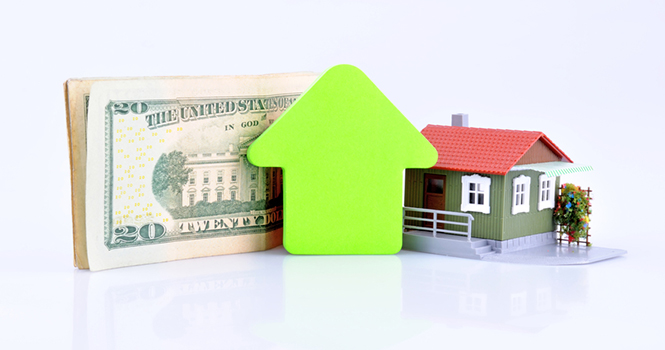Persistent supply shortages throughout the country led to slightly faster home price appreciation during the third quarter, according to the latest quarterly report by the National Association of REALTORS®. The report also revealed that seven of the 10 most expensive housing markets in the U.S. are in the West, including San Jose, Calif., which had a median single-family home price of $1 million for the second straight quarter.
The median existing single-family home price increased in 87 percent of measured markets, with 155 out of 178 metropolitan statistical areas (MSAs) showing gains based on closed sales in the third quarter compared with the third quarter of 2015. Twenty-two areas (12 percent) recorded lower median prices from a year earlier.
There were a growing number of rising markets in the third quarter compared to the second quarter of this year, when price gains were recorded in 83 percent of metro areas. Twenty-five metro areas in the third quarter (14 percent) experienced double-digit increases—unchanged from the second quarter of this year. A year ago, 21 metro areas (12 percent) saw double-digit price appreciation.
Lawrence Yun, NAR chief economist, says prospective buyers faced a very challenging market during the third quarter. “Mortgage rates around historical lows and solid local job creation created a winning formula for sustained home-buying demand all summer long,” he says. “Unfortunately, for house hunters in several of the top job producing metro areas around the country, deficient supply levels limited their options and drove prices higher—especially in markets in the West and South.”
The national median existing single-family home price in the third quarter was $240,900, which is up 5.2 percent from the third quarter of 2015 ($228,900), surpassing this year’s second quarter ($240,700) as the current peak quarterly median sales price. The median price during the second quarter increased 4.9 percent from the second quarter of 2015.
Total existing-home sales, including single-family and condos, slid 2.2 percent to a seasonally adjusted annual rate of 5.38 million in the third quarter from 5.50 million in the second quarter of 2016, and are 0.4 percent lower than the 5.40 million pace during the third quarter of 2015.
“After climbing to their highest annual pace in over nine years in June, sales sputtered in the third quarter because inventory could not catch up with what was being quickly sold,” says Yun. “Only a decent rebound in September kept the monthly and annual sales declines from being even larger.”
At the end of the third quarter, there were 2.04 million existing homes available for sale, which was 6.8 percent below the 2.19 million homes for sale at the end of the third quarter in 2015. The average supply during the third quarter was 4.6 months, down from 4.9 months a year ago.
Despite faster price growth last quarter, the decline in mortgage rates and an uptick in the national family median income ($70,306) slightly improved affordability compared to a year ago. To purchase a single-family home at the national median price, a buyer making a 5 percent down payment would need an income of $51,661; a 10 percent down payment would require an income of $48,942; and $43,504 would be needed for a 20 percent down payment.
“If mortgage rates start to rise heading into next year, prospective buyers could face weakening affordability conditions in their market, unless supply dramatically improves,” adds Yun. “That’s why it’s absolutely imperative that homebuilders ramp up the production of more single-family homes to meet demand and slow price growth.”
The five most expensive housing markets in the third quarter were the San Jose, Calif., metro area, where the median existing single-family price was $1,000,000; San Francisco at $835,400; urban Honolulu at $745,300; Anaheim-Santa Ana, Calif., at $740,100; and San Diego at $589,300.
The five lowest-cost metro areas in the third quarter were Youngstown-Warren-Boardman, Ohio, at $90,300; Cumberland, Md., at $94,400; Decatur, Ill. at $99,400; Elmira, N.Y., at $109,400; and Rockford, Ill., at $111,900.
Metro area condominium and cooperative prices—covering changes in 59 metro areas— showed the national median existing-condo price was $225,100 in the third quarter, up 4.6 percent from the third quarter of 2015 ($215,200). Forty-one metro areas (69 percent) showed gains in their median condo price from a year ago; 17 areas had declines.
NAR President Tom Salomone says the Federal Housing Administration’s recently-announced rule change to lower the owner-occupancy requirement for approved condominium buildings from 50 percent to 35 percent under certain conditions is a step forward for prospective buyers considering a condo.
“Condos have typically been an attractive and viable option for first-time buyers, and recent NAR data are showing that they’re having a little more success,” he says. “With this lower owner-occupancy requirement, Realtors® will have more options for their clients looking to purchase a condo with an FHA mortgage. While we believe all condo buildings should have the rules applied to them equally, we also believe FHA has heard the concerns of Realtors® and is moving in the right direction.”
Regional Breakdown
Total existing-home sales in the Northeast dropped 7.5 percent in the third quarter and are now 1.9 percent below the third quarter of 2015. The median existing single-family home price in the Northeast was $272,600 in the third quarter, up 1.2 percent from a year ago.
In the Midwest, existing-home sales decreased 4.2 percent in the third quarter, but are 1 percent above a year ago. The median existing single-family home price in the Midwest increased 5.6 percent to $191,200 in the third quarter from the same quarter a year ago.
Existing-home sales in the South declined 2.7 percent in the third quarter and are 0.9 percent lower than the third quarter of 2015. The median existing single-family home price in the South was $213,700 in the third quarter, 6.5 percent above a year earlier.
In the West, existing-home sales increased 4.6 percent in the third quarter and are unchanged from a year ago. The median existing single-family home price in the West increased 7.6 percent to $349,200 in the third quarter from the third quarter of 2015.
For more information, visit www.realtor.org.











